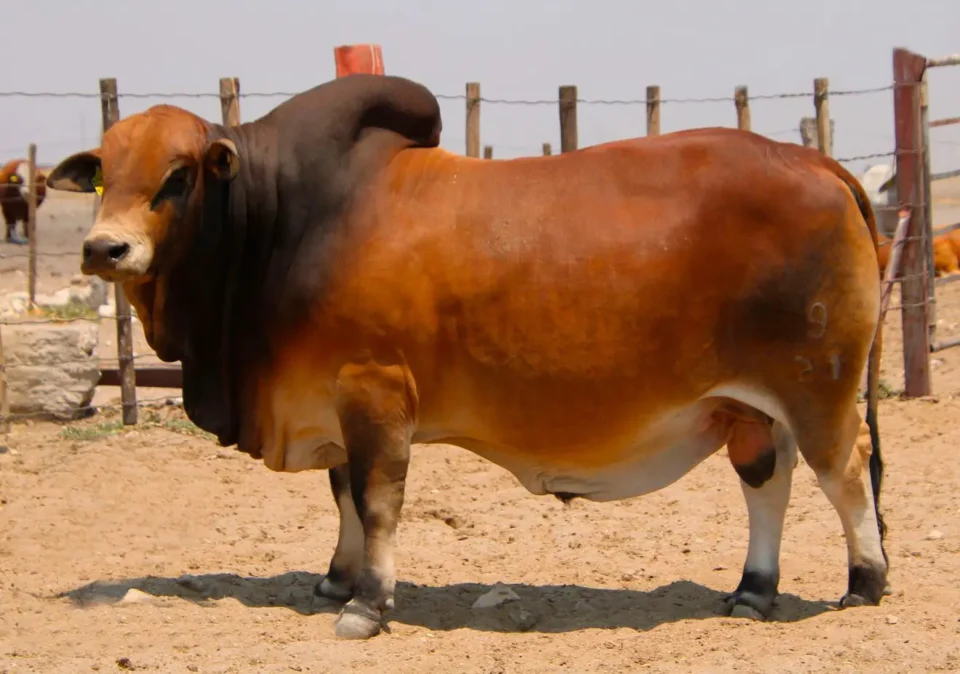In the ever-evolving landscape of livestock farming, adaptability, efficiency, and profitability have become the cornerstones of sustainability. For many South African commercial cattle farmers, this reality became all too clear as they faced a growing divide between high-maintenance performance breeds and hardy indigenous cattle. This disconnect ultimately gave rise to the South African Boran—a breed that today stands proudly as one of the most practical and profitable beef cattle options in the region.
The Problem: Too Much or Too Little
South African cattle producers have long operated under difficult conditions: harsh and varied climates, fluctuating feed availability, unpredictable rainfall, and escalating input costs. Yet, for many years, the mainstream options available to farmers were deeply polarised.
On the one hand, there were high-performance breeds imported or developed for feedlots—genetically designed to produce the perfect carcass but entirely dependent on concentrated feed, constant veterinary attention, and intensive management. These animals could not survive without substantial human input, and the associated costs eroded profit margins quickly, especially in drought years or during economic downturns.
On the other end of the spectrum were the indigenous breeds—resilient, drought-tolerant, and well-suited to the South African environment. While these animals required minimal input, they often fell short of abattoir and market expectations. Their carcasses, though functional, were penalised for lacking the yield, conformation, and fat distribution that the commercial market demanded. This translated into lower income, regardless of the animal’s environmental value.
Farmers were stuck between two unsustainable options: high input with high risk, or low input with low return. What was needed was a middle ground—a breed that could combine the best of both worlds.
The Solution: Enter the Boran
That middle ground arrived in the form of the Boran—a breed with a rich history in East Africa but one that has since been refined and strategically developed for South African conditions. The Boran’s genetic roots lie in Kenya, where it was shaped over centuries by nature and traditional pastoralist management into a supremely hardy and functional animal.
When South African farmers began introducing Boran cattle into their operations, the results were nothing short of transformative. Here was an animal that required minimal feed supplementation, thrived on veld grazing, and could handle periodic droughts without breaking stride. Even more importantly, the Boran produced a market-acceptable carcass—with enough muscle, fat cover, and quality to meet commercial standards without attracting abattoir penalties.
The breed’s adaptive efficiency quickly earned it favour among commercial farmers looking to cut costs without compromising income. With Borans, farmers could reduce reliance on expensive feedlots and veterinary programs, and instead focus on more natural, sustainable production models.
A Low-Input, High-Return Model
The Boran’s true strength lies in its ability to deliver optimal returns with low to no input. It embodies a model of biological efficiency—where the animal converts natural resources into income with minimal intervention. It calves easily, mothers excellently, and grows steadily on grass. Its docility and manageable temperament also make it a pleasure to work with in the field.
This balance has made the Boran not just a niche solution, but a mainstream opportunity for progressive cattle producers. It is a breed that aligns with modern agricultural goals: reduced carbon footprints, regenerative grazing systems, and economic resilience in the face of climate shocks.
More Than Just a Breed—A Strategy
For many South African farmers, choosing Boran has become more than just a breed decision—it’s a strategic shift toward long-term viability. The breed represents a philosophy of working with nature rather than against it. In a time when input costs are rising and climate pressures intensifying, the Boran is a blueprint for profitability through practicality.
As the Boran continues to gain popularity, breed societies and farmers are working together to ensure ongoing genetic improvement, consistent carcass quality, and wider accessibility. From large-scale commercial operations to emerging farmers building their first herds, the Boran is proving itself as a powerful ally.
In Summary:
The South African Boran stands as a testament to the power of selective breeding, environmental adaptation, and farmer-driven innovation. It fills the once-empty space between unsustainable perfection and rugged inefficiency—offering a hardy, productive, and profitable alternative. It’s not just a breed. It’s the future of practical cattle farming in South Africa.



